There’s something magical about a pot of chicken stock simmering on the stove. The aroma alone can make your kitchen feel warm and comforting — like you’re cooking with generations of tradition behind you. Homemade chicken stock is one of those simple, satisfying kitchen staples that turns everyday meals into restaurant-quality dishes. And once you’ve made it yourself, you’ll never want to buy boxed stock again.
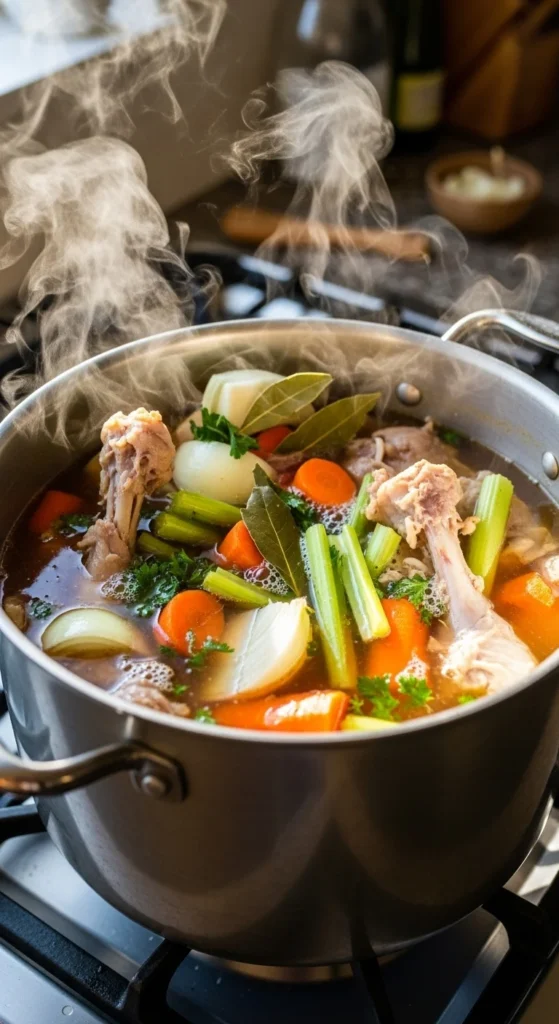
Why Homemade Stock Is Worth It
Sure, store-bought stock is convenient, but it can’t compete with the rich flavor and silky texture of homemade. The difference comes down to collagen and time — when you simmer chicken bones and veggies slowly, you extract natural gelatin that gives your soups and sauces that luxurious mouthfeel.
Plus, making stock from scratch is a smart way to use leftovers. Chicken carcasses, veggie ends, and herb stems all come together to create something truly golden.
Step 1: Gather Your Ingredients
A great chicken stock doesn’t need fancy ingredients — just a handful of basics that bring out deep, savory flavor.
You’ll Need:
- 2–3 pounds of chicken bones or carcasses (leftover roasted chicken works perfectly!)
- 2 carrots, chopped
- 2 celery stalks, chopped
- 1 large onion, quartered (no need to peel)
- 1 head of garlic, halved
- 1 bay leaf
- 1 teaspoon black peppercorns
- A few sprigs of thyme and parsley
- 12 cups of cold water
- 1 teaspoon salt (optional — you can always add more later)
Optional flavor boosters:
- A splash of apple cider vinegar (helps extract nutrients from bones)
- A few slices of ginger for brightness
- A parsnip or leek for subtle sweetness
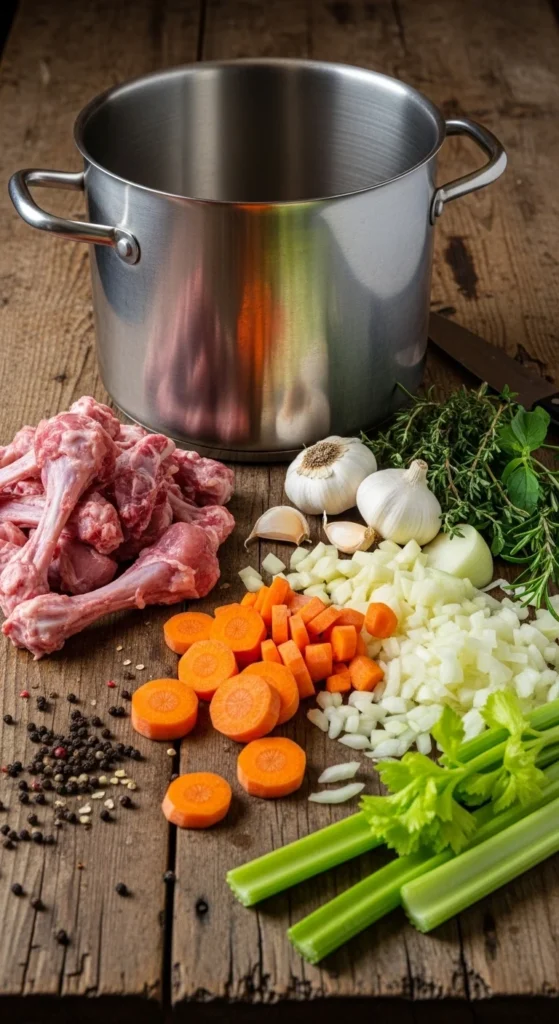
Step 2: Roast for Richer Flavor
This step isn’t required — but it’s highly recommended. Roasting your chicken bones and vegetables first adds incredible depth and color to your stock.
- Preheat your oven to 425°F (220°C).
- Spread the bones, onions, carrots, and celery on a baking sheet.
- Roast for 25–30 minutes, until everything is golden brown.
The caramelized bits created during roasting bring a subtle sweetness and boldness to your finished stock that raw bones alone just can’t match.
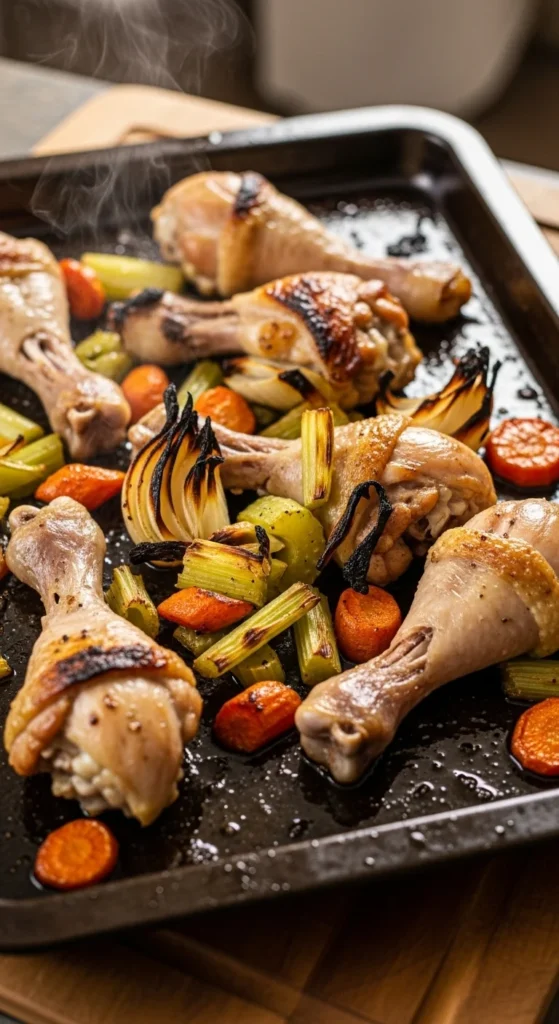
Step 3: Simmer Low and Slow
Now for the relaxing part — let the pot do the work.
- Transfer the roasted bones and veggies into a large stockpot.
- Add the herbs, peppercorns, and garlic.
- Pour in cold water until everything is just covered.
- Bring to a gentle simmer over medium heat — then reduce to low.
Let it simmer uncovered for 4 to 6 hours (or longer if you have the time). The longer it cooks, the richer and silkier it gets.
Tips for Success:
- Avoid boiling. A rolling boil makes the stock cloudy. Keep it to a gentle simmer with only small bubbles.
- Skim the foam. As it cooks, skim off any foam or fat that rises to the top. This keeps your stock clear and clean-tasting.
- Add water as needed. If too much evaporates, top off with more hot water.
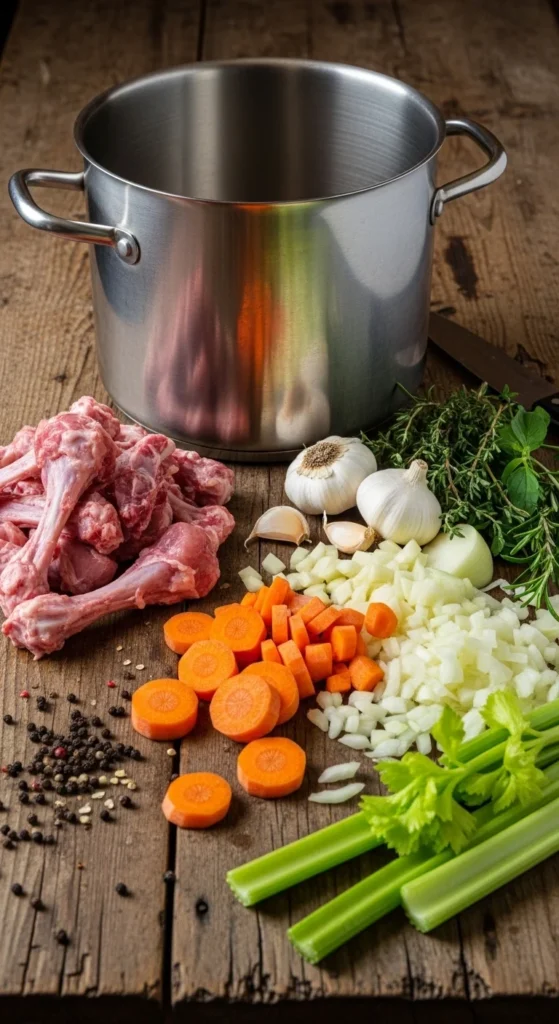
Step 4: Strain and Store
Once the stock is fragrant and golden, it’s time to strain out the solids.
- Use tongs or a slotted spoon to remove large pieces of bones and vegetables.
- Carefully pour the stock through a fine-mesh sieve (or cheesecloth) into another pot or heatproof bowl.
- Discard the solids — they’ve given all their flavor!
Let it cool for about 30 minutes, then transfer to storage containers.
Storage Tips:
- Fridge: Keeps up to 5 days in airtight jars.
- Freezer: Freeze in containers or silicone trays for up to 3 months.
- Ice cube method: Pour stock into an ice cube tray for quick flavor boosts when cooking.
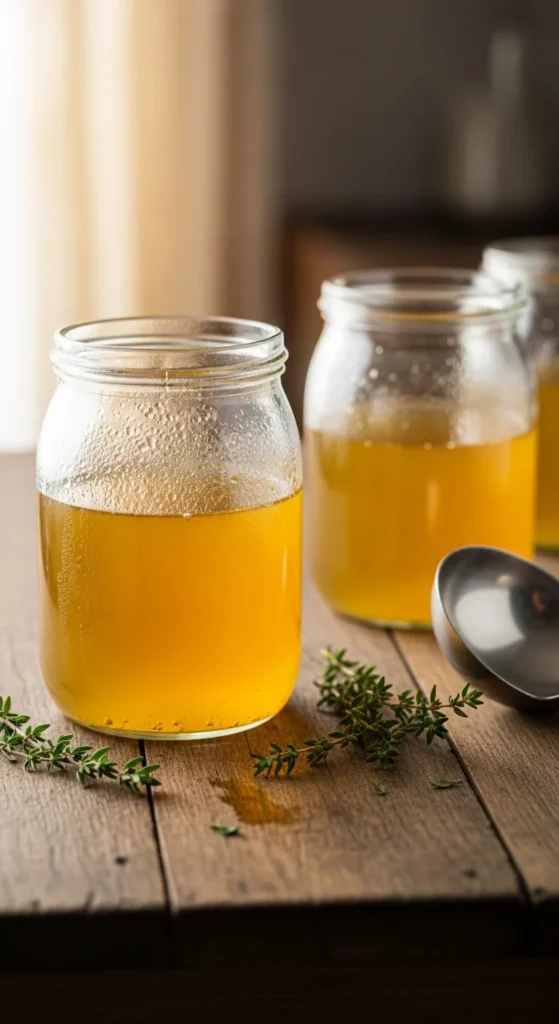
Step 5: Use It in Everything
Now that you have liquid gold, use it to bring flavor to all your dishes.
Delicious Ways to Use Your Stock:
- In soups and stews for rich depth
- As the liquid base for risotto or gravy
- To cook rice or grains instead of water
- For mashed potatoes or stuffing for extra flavor
Homemade chicken stock adds that professional touch to home cooking — simple, wholesome, and delicious.

Final Thoughts
Making chicken stock from scratch is one of those quiet kitchen rituals that pays off in flavor and satisfaction. It’s easy, budget-friendly, and transforms leftovers into something truly special.



Leave a Reply